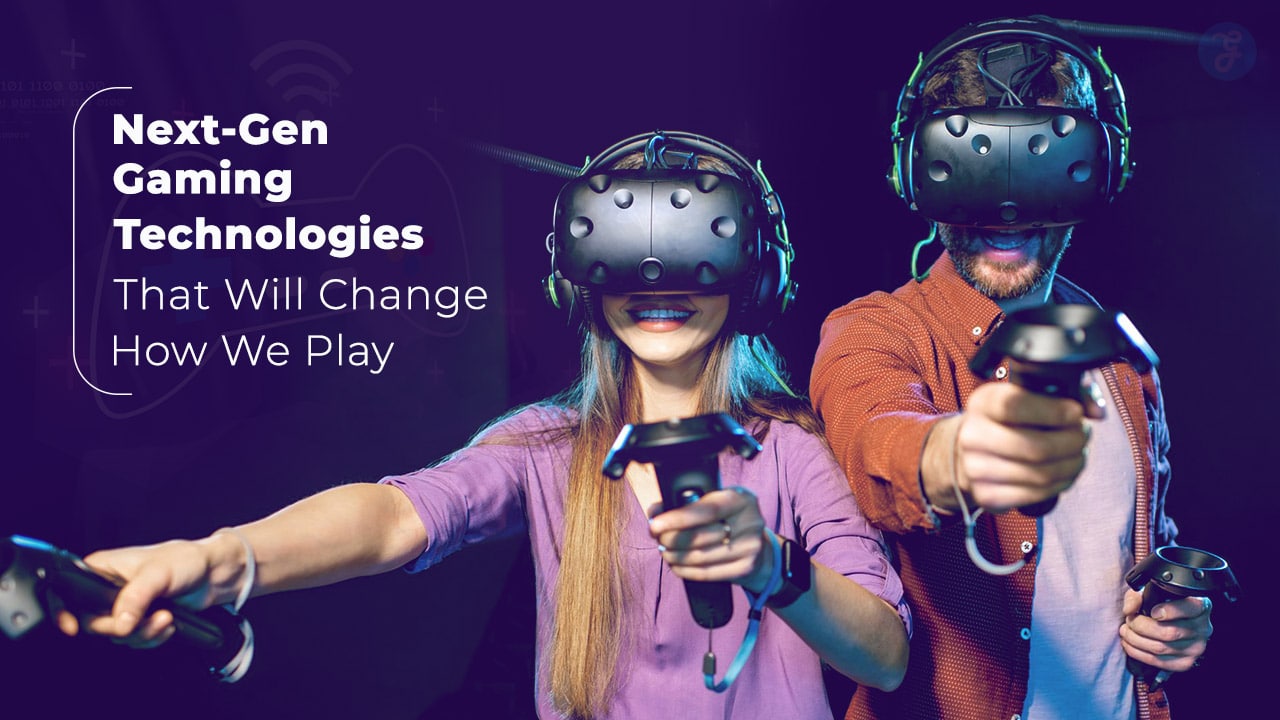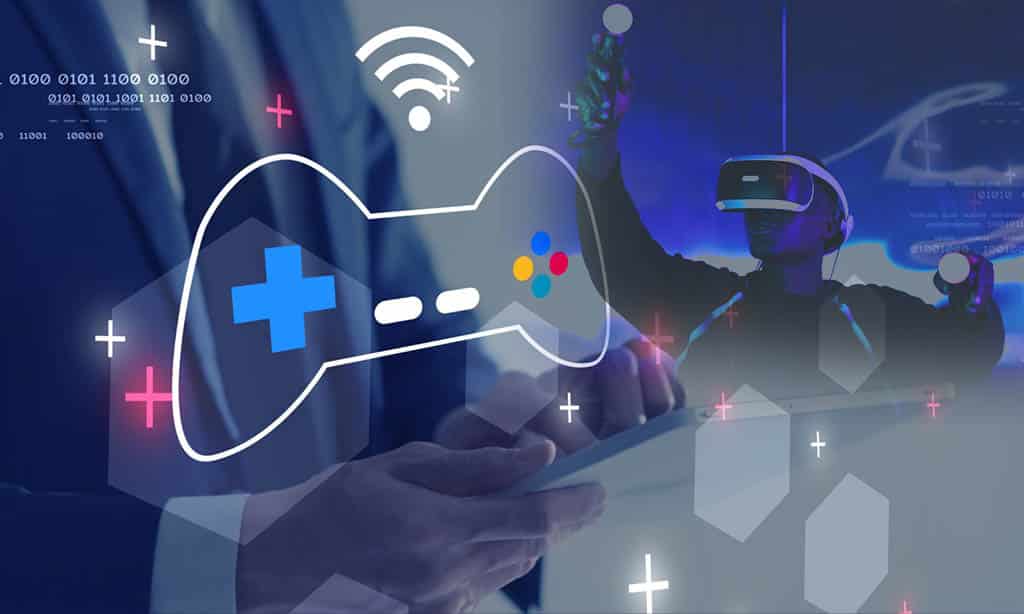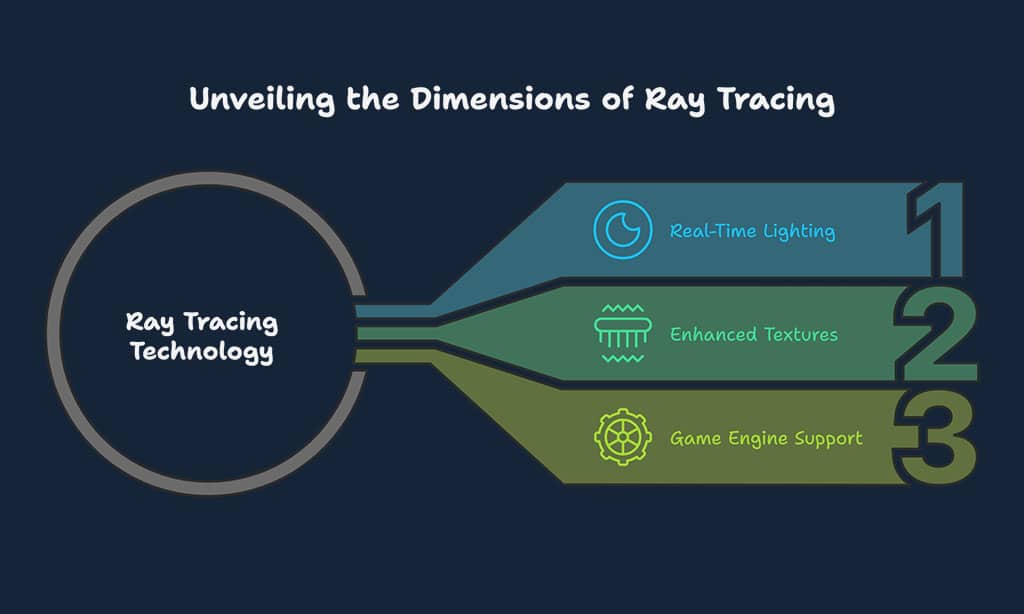The gaming industry is evolving at an unprecedented pace, with technological advancements reshaping how players experience their favorite titles.
From AI-driven storytelling to virtual reality, innovation is pushing gaming beyond traditional boundaries. These advancements not only enhance gameplay mechanics but also revolutionize how games are developed, distributed, and experienced.
As technology integrates deeper into gaming, it promises to create more immersive, accessible, and realistic experiences than ever before.
In this article, we will explore 10 next-gen gaming technologies that will change how we play, diving deep into how these groundbreaking advancements are transforming the industry.
The Future of Gaming: A Technological Revolution
As gaming transitions into a new era, players are witnessing a shift toward immersive experiences, real-time AI interactions, and seamless cloud integration. These innovations are not only enhancing realism but also redefining how developers create and deliver content.
With the rise of 5G, blockchain, and AI, gaming is becoming more interactive and personalized, creating opportunities for new game genres and business models.
Key Trends Driving Next-Gen Gaming Technologies
- Artificial Intelligence (AI) in gaming—creating smarter NPCs and dynamic storylines.
- Cloud gaming and 5G—enabling instant access to high-end gaming without downloads.
- Virtual and augmented reality—bridging the gap between real and digital worlds.
- Blockchain and NFTs—offering digital ownership and play-to-earn models.
- Haptic feedback and brain-computer interfaces—enhancing sensory experiences in gaming.
Now, let’s explore these 10 next-gen gaming technologies that will change how we play.
10 Next-Gen Gaming Technologies That Will Change How We Play
The gaming landscape is undergoing a massive transformation as cutting-edge technologies redefine how players interact with digital worlds. From artificial intelligence shaping in-game decisions to cloud gaming making high-end experiences more accessible, the industry is evolving in ways that were once considered science fiction.
This shift is not just about enhancing graphics or increasing processing power; it’s about revolutionizing the core mechanics of gaming itself. Now, let’s dive into 10 next-gen gaming technologies that will change how we play.
1. Artificial Intelligence (AI) in Gaming
Smarter NPCs and Dynamic Storytelling
AI is revolutionizing gaming by enabling NPCs (non-playable characters) to behave more realistically and adapt to player actions. This enhances immersion, making games feel more lifelike. AI also plays a crucial role in procedural storytelling, allowing games to craft unique narratives based on player decisions.
Developers are leveraging machine learning to enhance AI-driven dialogues, enemy tactics, and world-building, making gaming worlds feel more organic and unpredictable.
| Feature | Impact on Gaming |
| Dynamic NPC Behavior | AI-driven characters adapt to player choices in real-time. |
| Procedural Storytelling | AI crafts unique narratives based on in-game decisions. |
| Machine Learning | AI learns and evolves gameplay tactics over time. |
Example: “The Last of Us Part II” uses AI-powered enemies that communicate and react strategically to the player’s movements.
2. Cloud Gaming and Streaming Services
Play Anywhere, Anytime with No Downloads
Cloud gaming eliminates the need for expensive hardware, allowing users to stream high-end games on any device with an internet connection. This means players can enjoy console-quality graphics without investing in expensive gaming rigs.
Cloud gaming also enables seamless cross-platform play and allows developers to update games instantly, ensuring players always have access to the latest content.
| Cloud Gaming Platform | Key Features |
| GeForce Now | Supports high-performance gaming on low-end devices. |
| Xbox Cloud Gaming | Offers a vast library with Xbox Game Pass integration. |
| PlayStation Now | Provides access to classic and modern PlayStation titles. |
Example: “Google Stadia” allows users to play console-quality games on mobile devices via streaming.
3. Virtual Reality (VR) and Augmented Reality (AR)
Merging Real and Virtual Worlds
VR and AR are enhancing player immersion by offering interactive digital environments and overlaying game elements onto the real world. While VR creates fully immersive environments, AR integrates digital content into real-world surroundings, making it ideal for mobile gaming and social interactions.
The latest advancements in VR include more ergonomic headsets, improved motion tracking, and higher-resolution displays.
| Technology | How It Enhances Gaming |
| Virtual Reality (VR) | Fully immersive worlds with motion tracking. |
| Augmented Reality (AR) | Blends digital elements with real-world settings. |
| Mixed Reality (XR) | Combines VR and AR for seamless experiences. |
Example: “Meta Quest 3” provides an immersive VR experience with high-end graphics and real-world integration.
4. Haptic Feedback and Sensory Gaming
Feeling the Game Beyond the Screen
Advanced haptic technology allows players to feel in-game interactions through specialized gloves, suits, and controllers. These tactile sensations enhance immersion by providing physical feedback for virtual actions.
From feeling the tension of a bowstring to sensing the impact of an explosion, haptic feedback makes gaming more realistic and engaging.
| Haptic Technology | Gaming Application |
| Haptic Gloves | Allows players to feel textures and physical sensations. |
| Adaptive Triggers | Creates tension in controllers for realistic feedback. |
| Full-Body Suits | Provides immersive sensory input in VR games. |
Example: “Sony’s DualSense Controller” uses adaptive triggers and haptic feedback for a realistic gaming experience.
5. Ray Tracing and Hyper-Realistic Graphics
Next-Level Visual Fidelity
Ray tracing technology enhances lighting, reflections, and shadows, making game environments more realistic than ever. This innovation brings cinematic-quality visuals to gaming, allowing for lifelike character expressions and dynamic environmental effects.
Next-gen consoles and GPUs are increasingly supporting real-time ray tracing, pushing graphical realism to new heights.
| Feature | Benefit |
| Real-Time Lighting | More realistic reflections and shadow effects. |
| Enhanced Textures | Higher-resolution surfaces and materials. |
| Game Engine Support | Integrated into Unreal Engine 5 and Unity. |
Example: “Cyberpunk 2077” showcases cutting-edge ray-traced graphics for lifelike environments.
6. Blockchain and NFT-Based Gaming
True Digital Ownership and Play-to-Earn Models
Blockchain technology is introducing decentralized ownership through NFTs (Non-Fungible Tokens), enabling players to buy, sell, and trade in-game assets. This allows gamers to have real-world value attached to their in-game investments, creating new revenue streams through play-to-earn models.
| Feature | Benefit |
| Digital Ownership | Players truly own in-game items, independent of studios. |
| Play-to-Earn Economy | Gamers can earn cryptocurrency by playing and trading. |
| Decentralization | Blockchain ensures transparency and security. |
Example: “Axie Infinity” allows players to trade and own NFT-based creatures in a decentralized economy.
7. AI-Generated Content (AIGC) in Gaming
Procedural Worlds and Infinite Possibilities
AI-generated content automates world-building, character interactions, and narrative evolution, making games infinitely replayable. By leveraging AI, developers can create vast, dynamic game worlds that feel handcrafted but are generated in real-time.
| AI Capability | Impact on Gaming |
| Procedural Generation | Unique game environments crafted dynamically. |
| Adaptive Storylines | Personalized narratives based on player behavior. |
| Realistic NPCs | AI-driven interactions enhance immersion. |
Example: “No Man’s Sky” uses AI to generate vast, unique planets procedurally.
8. 5G and Ultra-Fast Internet for Gaming
Seamless Multiplayer and Instant Load Times
The expansion of 5G is reducing latency and improving real-time multiplayer experiences. Gamers can now enjoy fast, seamless connections even in large-scale battle arenas and MMORPGs, making lag a thing of the past.
| 5G Benefit | Impact on Gaming |
| Lower Latency | Faster response times in multiplayer games. |
| High-Speed Cloud | Enables smooth game streaming without lag. |
| Cross-Platform Play | Seamless connectivity across different devices. |
Example: “PUBG Mobile” runs smoother and with less latency on 5G networks.
9. Brain-Computer Interfaces (BCI) in Gaming
Gaming with Your Mind
Brain-computer interfaces allow players to control games using neural activity, opening new accessibility and immersive possibilities. With this technology, gaming could become completely hands-free, paving the way for mind-controlled interactions.
| BCI Feature | Gaming Potential |
| Hands-Free Gaming | Allows neural-based control without physical input. |
| Accessibility Boost | Enables disabled gamers to interact more easily. |
| Faster Reflexes | Direct brain commands create near-instant responses. |
Example: “Neuralink” is developing BCI technology that could enable thought-based game controls.
10. Quantum Computing and AI-Driven Game Development
Next-Gen Processing Power for Limitless Worlds
Quantum computing can revolutionize game physics, AI, and procedural generation by offering unparalleled processing power. This technology could allow for highly detailed simulations with unprecedented levels of complexity.
| Quantum Feature | How It Affects Gaming |
| Massive Processing | Enables ultra-complex AI simulations. |
| Enhanced Realism | Supports advanced physics and real-time interactions. |
| Faster Computation | Reduces load times for expansive open-world games. |
Example: “IBM’s quantum computing research” is exploring real-time AI-driven gaming solutions.
Takeaways
The 10 next-gen gaming technologies that will change how we play are shaping the future of interactive entertainment in ways previously unimaginable. AI is revolutionizing NPC behavior, making interactions more dynamic and realistic, while cloud gaming is breaking down hardware barriers, allowing anyone with an internet connection to experience high-quality gaming.
VR and AR are blurring the lines between the digital and physical worlds, creating more immersive experiences that push gaming beyond traditional screens. Meanwhile, blockchain is empowering players with true ownership of in-game assets through NFTs, ushering in a new era of play-to-earn opportunities.
As these technologies continue to evolve, gaming will become more personalized, interactive, and boundary-breaking than ever before.
Developers will need to adapt to these changes, leveraging innovations to create richer experiences that captivate players worldwide. The future of gaming is not just about better graphics or faster performance—it’s about redefining how we connect, play, and experience digital worlds.











































